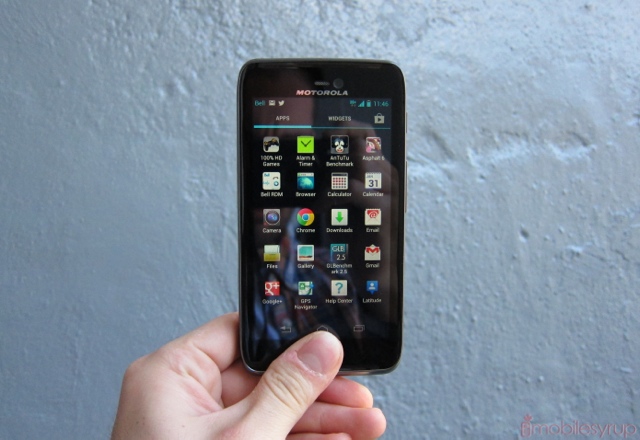
Two years ago, if you’d have told me that Motorola would be owned by Google and be producing devices that rivalled the top offerings from Samsung and HTC, I’d have been pretty skeptical. Motorola’s pre-Gingerbread software was often riddled with bloat and bugs, overshadowing beautifully-made hardware and excellent call quality. But since the release of Gingerbread, the company has been focusing on improving the user experience by bringing it as close to stock Android as possible.
The ATRIX HD LTE, or the Atrix 3 to those averse to acronym-heavy names, equates to a list of firsts for Motorola: its first device with a 720p screen; its first with LTE connectivity; its first with on-screen buttons (besides the recently-released RAZR V); and its first with Ice Cream Sandwich. It’s also the company’s best smartphone by far, and one of my favourite devices of the year. What makes the ATRIX HD LTE so good? Read on to find out.
Specs:
– Android 4.0.4 with custom Motorola skin
– 4.5-inch 1280 x 720 pixel TFT LCD display with ColorBoost
– 1.5Ghz Qualcomm Snapdragon S4 processor
– 1GB RAM, 8GB internal storage (5GB usable), microSD slot
– 8MP back camera with flash, 1.3MP front-facing camera
– WiFi, Bluetooth 4.0, GPS, WiFi Direct
– 69.9 x 133.5 x 8.4 mm
– 140g
– EDGE/HSPA+/LTE
– 1780mAh battery
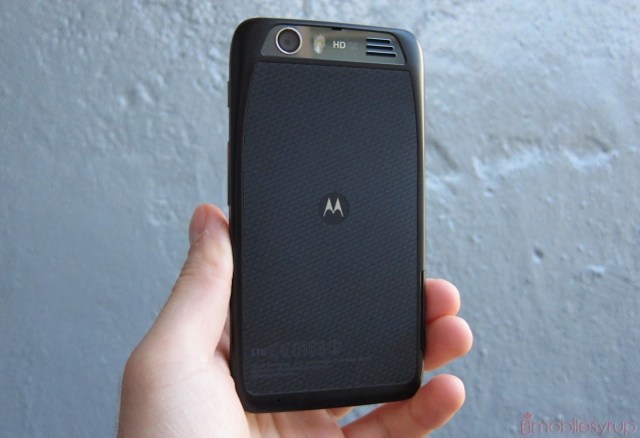
Design
The ATRIX HD LTE bears little resemblance to its namesake. Rather, it takes cues from the existing RAZR line and looks far more like the Rogers-released RAZR XT910 than the Bell-released MB860. We like this: the Atrix, which is 8.4mm at its thinnest point, is comfortable and well-constructed without being oversized.
It’s not a striking handset by any means — while there is a satisfying symmetry on the phone’s face, the bezel is larger than most modern handsets, reminding us once again that Motorola is focused more on function than form. The TFT screen, too, likely keeps the device a millimetre or so thicker than its AMOLED-festooned peers, but the vividness of its colours and sharpness of its text is something to behold.
The Atrix has rounder edges and less harsh angles than its Kevlar-equipped brethren which makes it, in my opinion, a more mature-looking device. High-quality components prevail throughout: the Atrix uses a much more rigid, higher-quality plastic than the recently-reviewed RAZR V, and the right-side power button is subtly textured for optimized sightless operation. On top the the HD has a mini HDMI port, microUSB port and 3.5mm headphone jack; the left side has a small latch that opens to reveal the microSD and microSIM slots. Yes, thankfully the Atrix HD uses a microSIM.
The advantage of being comparatively thicker than the RAZR is that the Atrix suffers less from “reverse chin disease.” While the camera module protrudes slightly and converges with the battery cover in a gentle curve, the transition is not stark, nor does it alter the balance of the device in the hand. This was one of my main complains about the RAZR, being thin for thinness sake. Unfortunately the Atrix is not equipped with a larger-than-average battery, but the 1780mAh non-removable cell is treated kindly by Qualcomm’s Snapdragon S4 SoC with integrated LTE.
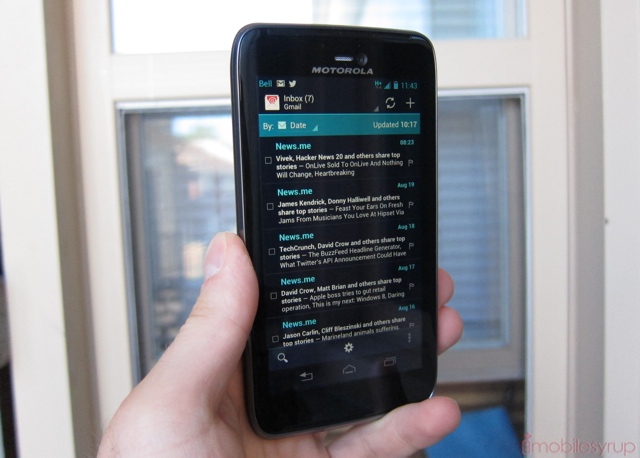
Display
Motorola’s first HD display, equipped with on-screen navigation buttons, is stunning. While not an OLED part, blacks are Super LCD-deep and text is some of the sharpest I’ve seen from a mobile display. At 4.5-inches, its pixel density is higher than the HTC One X and Galaxy S III, though by virtue of its TFT roots the screen is more recessed than those handsets. This is due to the LCD being separate from the glass; Super AMOLED and Super LCD screens fuse the LCD, digitizer and glass together for an impression much closer to the surface.
The digitizer on the Atrix is not quite as sensitive as I’m used to. Occasionally when scrolling down a webpage or an email, a slight brush of the screen would activate a link or fail to register my touch altogether; the screen must be acquitted more firmly. Viewing angles, too, fail to impress compared to the two aforementioned devices, but that’s where the downsides end.
Colours are vivid, making media a pleasure to view or watch on the device. Despite calls of oversaturation from other reviewers, I found the calibration to be close to perfect on our testing unit. Text is some of the sharpest I’ve seen from a mobile display and whites were accurate. Auto-brightness worked as expected, and levels adjusted smoothly as lighting changed in the room. While not the easiest device to use in sunlight, it blew past the Galaxy S III in our outdoor viewing tests.
It must also be noted that, aside from the Galaxy Nexus, this is the most powerful device released in Canada with on-screen buttons. While not for everyone — Samsung and HTC have ensured users won’t get too comfortable with the virtual menu button — as more developers add support for Android’s 4.0+ Holo guidelines, Motorola stands to benefit the most from this extra real estate. Having those virtual buttons, which disappear when watching video such as Bell Mobile TV, is a huge advantage over comparable devices, and proves that Google was in the right by changing the way we interact with our navigation buttons in Ice Cream Sandwich.
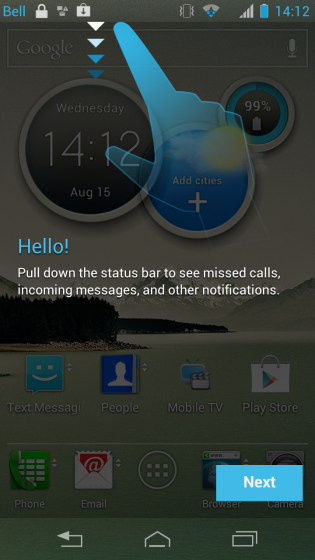
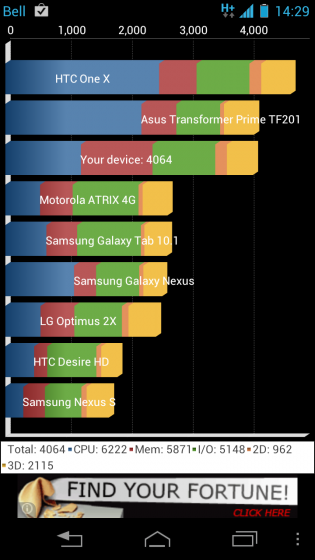
Performance & Software
The Atrix HD LTE is equipped with Qualcomm’s Snapdragon S4 SoC clocked at 1.5Ghz. This is the same chip used in the North American HTC One X and Galaxy S III and holds up extremely well to benchmarks and day-to-day performance. Due to the relative light-weight nature of Motorola’s skin — it’s as close to stock as any manufacturer is likely to offer without removing features — the Atrix’s build of ICS feels faster than any other device on the market, including the Galaxy S III.
As we move away from our emphasis on benchmarks which do not positively convey how a device feels in everyday use, I will emphasize that the Atrix can and does handle anything you throw at it. While it doesn’t have four cores, nor the fastest graphics processor on the market, there was never a time I found myself saying, ‘I wish this was faster’. The reason we’re moving away from using benchmarks as a gauge for smartphone performance? Despite blazing performance in all the apps and games we tested, its scores (for example Quadrant seen above) were 10-15% lower than the Galaxy S III and One X.
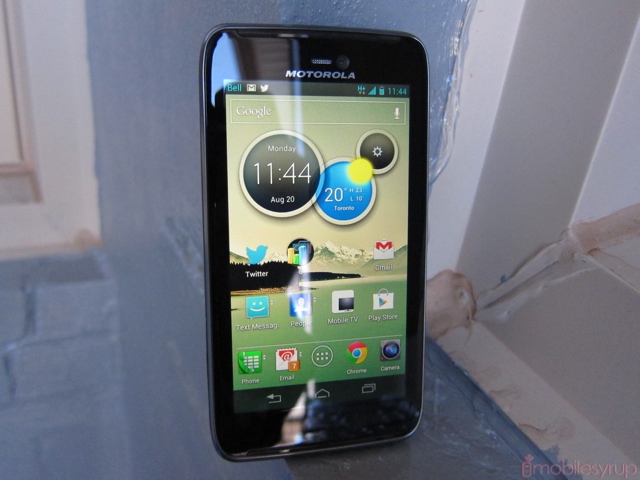
The new launcher embedded in Motorola’s build of Android 4.0.4 resembles stock Android in many ways, including the ability to easily create folders and swipe away notifications, but the company has gone a step further and integrated some pretty useful features that go far beyond what Android was built to do.
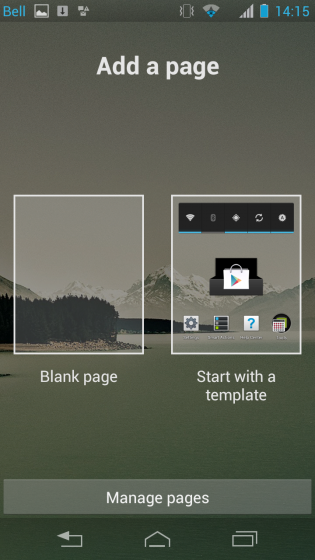

The launcher may look like stock ICS, but a few of Motorola’s first-party app icons — Phone, Email, Browser, Messages, Email — have a little arrow near the top right. Flicking up on the icon reveals a mini widget that overlays atop the screen, allowing you to scroll through missed calls, emails, text messages and browser bookmarks. It proved to be a handy and often-used feature, and proves just how versatile Android can be.
And the homescreen layout has been tweaked a bit: new pages are added to the far right, and Motorola has included some templates to accomodate new users. The four-icon dock is customizable, too, but you’re always welcome to install a custom launcher such as Nova or Apex if stock isn’t up to snuff.

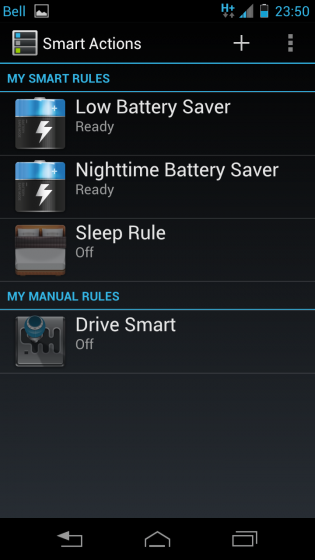
There’s also SmartActions, which we spoke about in our RAZR V review. They do a good job at automating some of the most arduous tasks one would think to perform on a smartphone, such as time- and location-based silencing of your ringer, or turning off certain radios such as WiFi or GPS when not in use. This version goes further than last year’s sending suggestions at certain intervals which you can choose to activate or ignore. I found battery life improved significantly after turning on the Low Battery Saver option, though I wish the phone was NFC-enabled as Smart Actions would be great with SmartTags.
Overall, you’re unlikely to be disappointed with the version of Android Motorola has put together. It’s the closest to stock Ice Cream Sandwich we’ve ever seen on a shipping device and all alterations to the interface are improvements. The phone does have a few pieces of bloatware from Bell and Motorola, but they can be disabled by going into Settings/Apps. The HD screen is really great for Mobile TV, if your plan gives you access to it.
The one issue I had with the software is the constant ‘Bell’ logo in the notification bar. It’s a constant reminder that the Atrix is a Bell exclusive, and takes up much-needed space at the top of the screen.
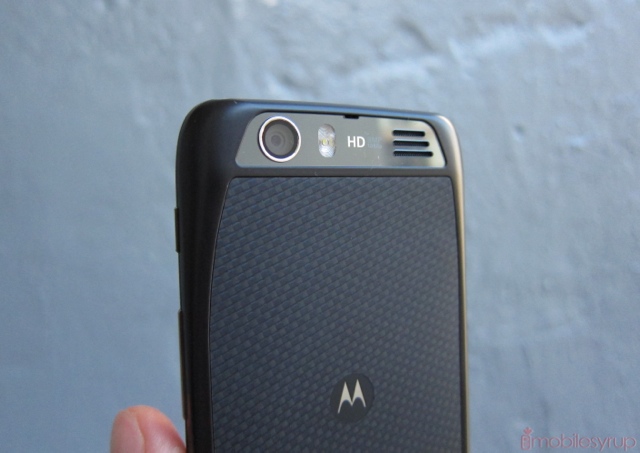
Camera
Here’s where things get a bit muddled. While the Atrix takes decent photos, it’s not nearly up to the standards set by the iPhone 4S and Samsung Galaxy S III. And we mean not even close. For some reason Motorola can’t quite get its stuff together when it comes to sourcing decent sensors and lenses, and while the user interface is positively overhauled, and the speed at which you can take photos is fantastic, the end results are often far less impressive.
The Snapdragon S4 chip allows for 5-shot burst mode and an instant shutter, so if it’s speed you’re worried about, don’t fret. Shots taken in good quality light tend to have a blueish tinge to them, as if the software can’t quite figure out the proper white balance. Detail is plentiful in those scenarios, with only a slight amount of grain or distortion. Move inside, or dim the lights, however, and you’re met with Mr. Grain in large doses, and he doesn’t taste very good.
The phone’s 1080p video quality is moderate at best, and suffers from softness and grain. Captured audio is good — better than on most smartphones — but is still not nearly usable for anything other than sharing the occasional clip on YouTube. We’re not at a point yet where, despite the purported “HD quality” of captured video, smartphones can be used for anything other than casual life journaling.
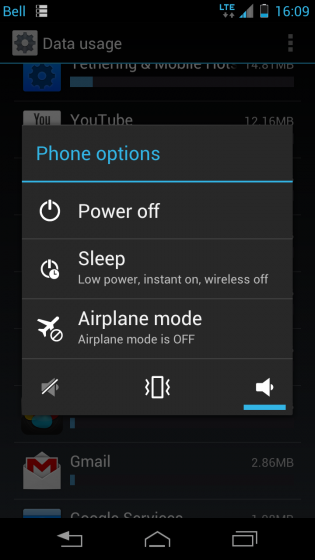
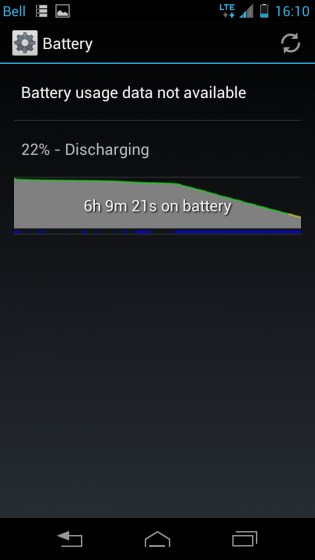
Battery Life
Again, decent. While we were hoping for a RAZR MAXX-style 3000+ mAh battery in the Atrix HD, the device had no trouble lasting through the day. LTE is still a considerable battery drain, but the Snapdragon S4 processor is one of the most efficient chips on the market and we rarely worried about the device dying on us.
That’s not to see we didn’t encounter some strange battery issues. On one particularly vexing streetcar ride, I yanked the device out of my pocket after discovering it had reached a temperature close enough to burning my skin. There were no open apps or processes that I could tell — some demon in the background was keeping the CPU at 100% utilization, knocking off around 1% of battery life per minute. A restart fixed the problem, but I still don’t know what caused the erratic behaviour. This happened several times over the course of a few days, despite a careful consideration of which third-party apps I had installed on the device.
Nonetheless, I was able to keep the device on and operating for around 16 hours on a regular day, surfing the web, answering emails, making phone calls, tweeting, ‘booking, and ‘gramming (that’s Twitter, Facebook and Instagram for those not in the know). With less intense use, I wouldn’t be surprised to see the Atrix surviving nearly two days on a single charge, especially with assiduous use of Battery Saving features.
Note that in the Power Menu (when you hold down the power button for a second) there is an option to enter into Sleep mode, which is great for movies or other activities when you don’t want your phone to be on and using battery, but want quick access to it after the fact.
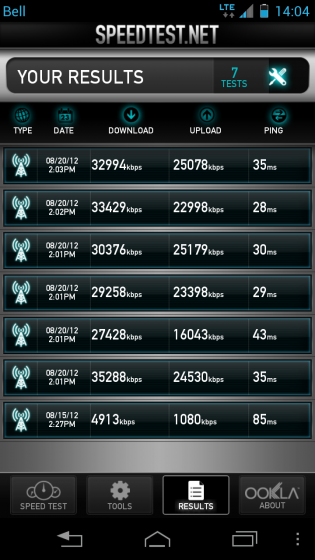
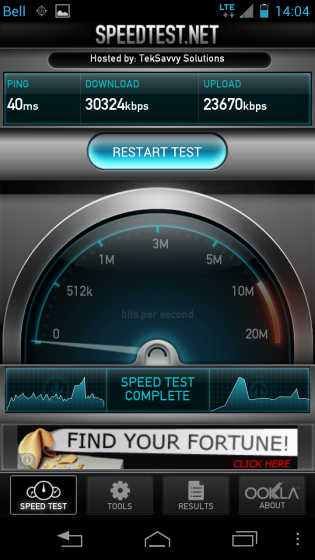
Network Speeds, Call Quality & More
As with most newer LTE devices, regardless of carrier, network speeds on the Atrix were astounding. We averaged around 30Mbps down and 23Mbps up, and achieved over 35/30 in some tests. Over HSPA+ the device was markedly slower but still blazing fast (and easier on the battery). Such speeds contributed to instant page loads, effortless app downloads and wait-free streaming on services such as Netflix, Bell Mobile TV and more.
Call quality, as with all Motorola devices, was excellent and above average compared to other OEMs. Some things never change, and in this case it’s a good thing. Audio quality from the headpiece and rear speakers were excellent and good, respectively, though maximum volume could have been higher on both.
Unfortunately the same can’t be said for the phone’s reception. Inside a room with thick walls in a small Ontario town, I laid a Galaxy S III (LTE), a new iPad and the Atrix HD LTE next to one another. The two former devices had 2-3 bars of HSPA+ — this was well outside LTE range — while the Motorola struggled to keep a signal at all. When in downtown Toronto, or a place with plentiful 1900Mhz signal, the Atrix maintained full bars of LTE or HSPA+, but keep this in mind if you live in a region of mediocre Bell service and plan to purchase this device.
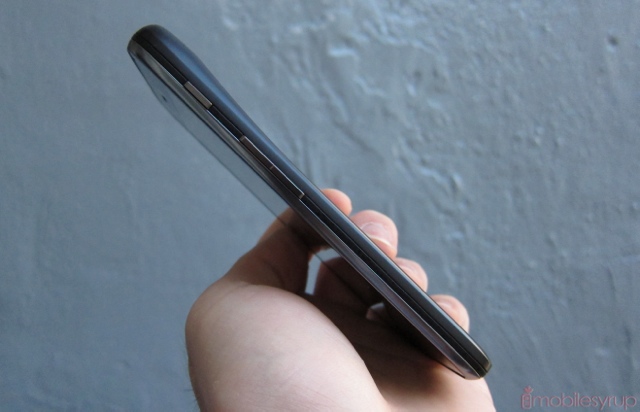
Conclusions
The ATRIX HD LTE is one of my favourite Android devices of the moment, and speaks to how Motorola has been constantly listening to its customers. Not only has the company opened a bootloader unlock service for developers and custom ROM creators, but they have pared back many of the MOTOBLUR software quirks that irked Motorola loyalists since the original Milestone.
This particular phone is neither complicated nor prophetic. It sits comfortably in the realm of “near-the-top” Android devices with a three-year term price far below that of most of its competitors. Indeed, I prefer Motorola’s no-frills software to Samsung’s overwrought and garish TouchWIZ on the Galaxy S III. And while the latter’s software may have the edge in terms of design, battery life and camera quality, the Atrix has a denser, sharper screen, virtual navigation buttons and a competitive price. It achieves so much because it doesn’t come off as trying too hard.
The ATRIX HD LTE is available for $49.95 on a three-year term or $599.95 outright, exclusively from Bell.
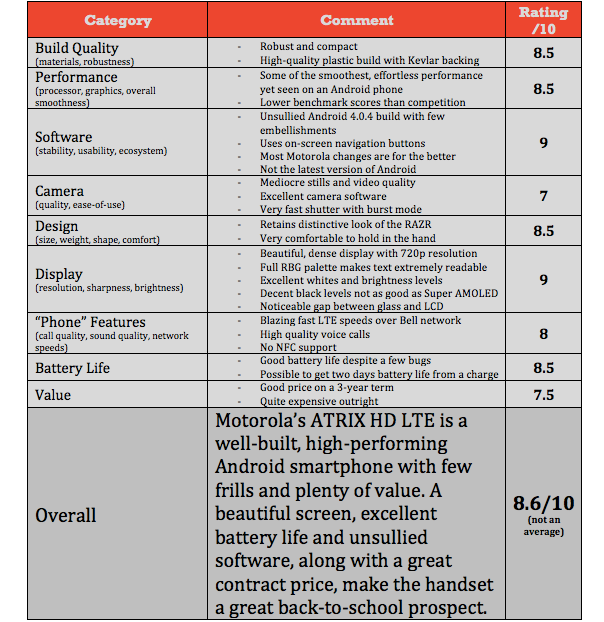
MobileSyrup may earn a commission from purchases made via our links, which helps fund the journalism we provide free on our website. These links do not influence our editorial content. Support us here.





